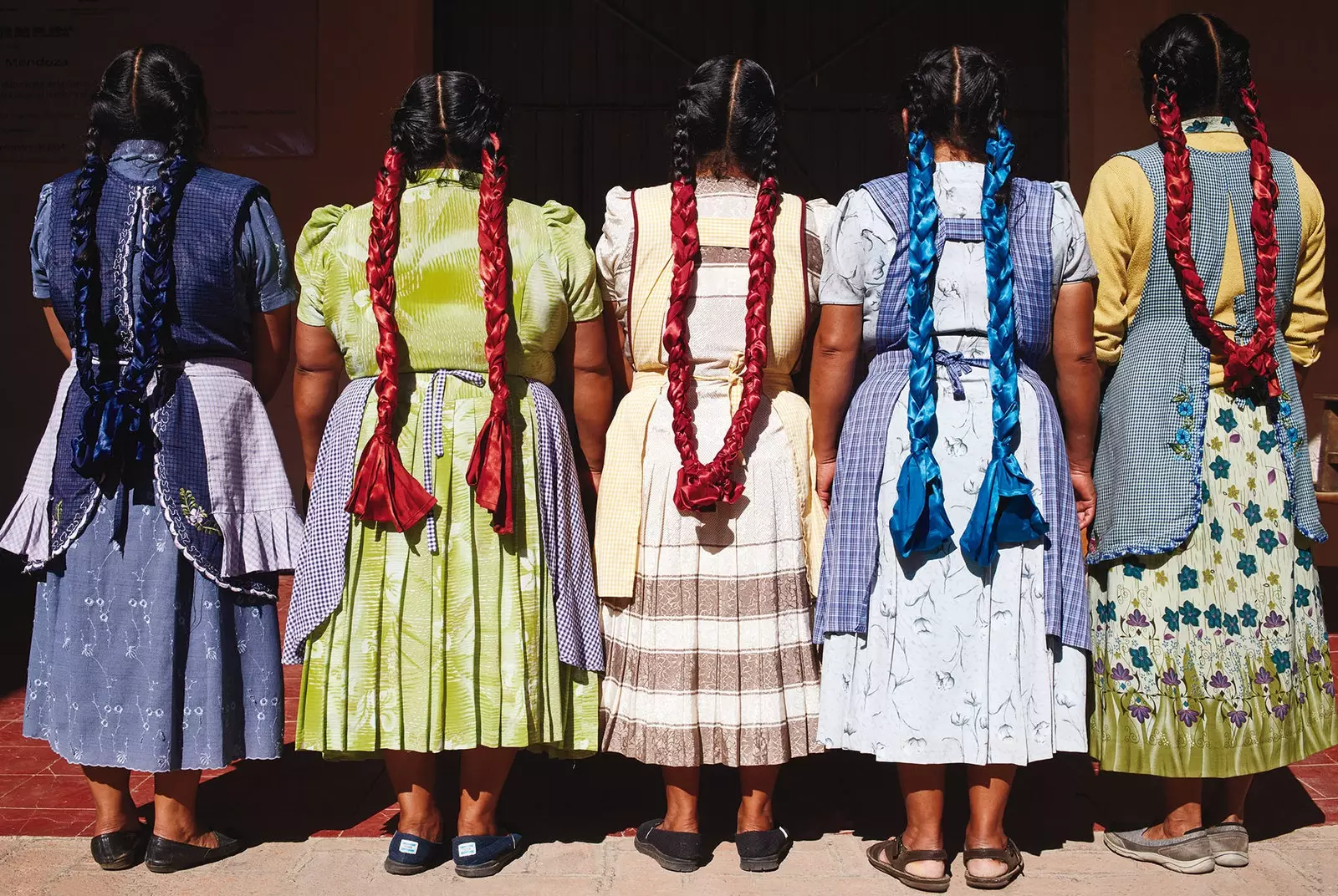
The Mendoza sisters in their home, Teotilán del Valle
"It's the blue house in front of the Casa de las Flores hotel. Come around six" , I read in the text message. I was on my way to spend an evening at Jessica Chrastil , an American expat with a small but influential residence for creatives and academics called Slowly , in the heart of Oaxaca.
He had spent the morning with Chrastil walking through the cobbled streets from the center of Oaxaca, entering markets, shops and restaurants where the ocher, fuchsia and turquoise colors of the facades were enhanced by the contrast of the grayish sky that threatened to an impending downpour.
Our first stop was boulenc , an artisan bakery European style converted into a cafeteria, a place of worship within the culinary universe for his dominance in dough fermentation and the use of ancestral regional grains.
Sitting at one of the rustic tables on the patio, we watched a cast of local and foreign artists dressed in flowing skirts and panama hats, while we eat a artisan menu (Shakshuka with poached eggs and the best avocado toast I've ever tasted) .
From there it is more than easy to see that Boulenc is the clear example that symbolizes the cultural turmoil that is Oaxaca. Simple and sophisticated in equal parts, it would be the Mexican equivalent of present-day Venice Beach, or the fantasy that every generation has of what once was downtown New York.
Seen this way, it is not surprising that so many residents of Slowly –ceramists, designers, dancers, museum curators and photographers– plan to spend a week in Oaxaca and finish staying a whole month.
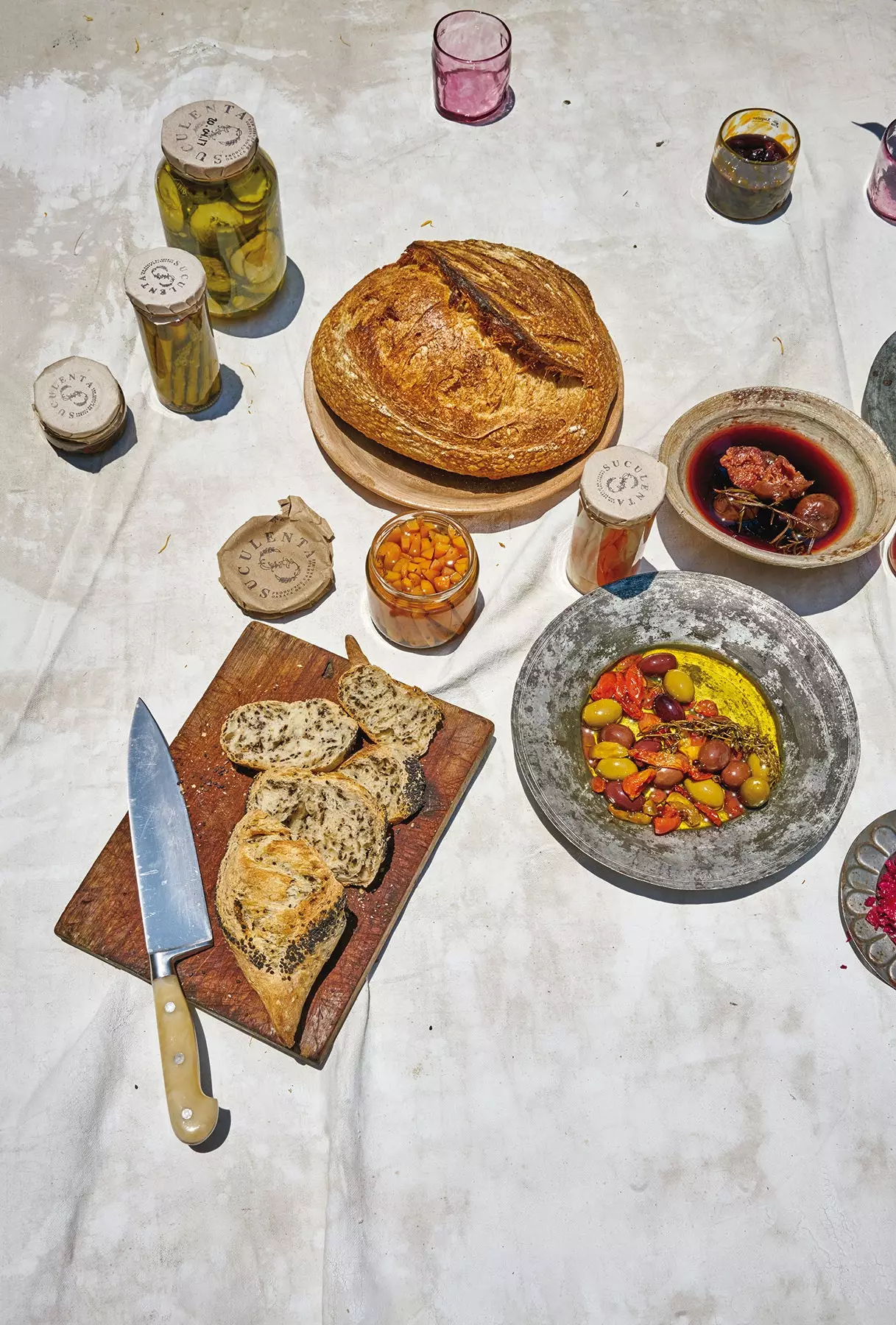
Dishes and products of Suculenta and Boulenc
Time flows more easily here, just like social interactions. Later in the night, I noticed that I moved to the same rhythm as the locals, Like I'm in my own neighborhood on the way home from my neighbor
After locating the corner where you are Chrastil's house in connection with the 17th century baroque church of Santo Domingo de Guzman, geographical and spiritual epicenter of the city, I felt confident enough to abandon my map and set course for the labyrinthine Mercado de Abastos to test the zucchini flower quesadilla that I had heard so much about.
Then, I did a total immersion in the Collective 1050° , a ceramic design association where I recognized the same black bowl from which I had eaten a few hours before. Like many cities in Mexico, the orientation of the streets and the gravitational attraction of the church make a lot of sense, a logistic relief that gives way to a more personal one.
Via an open window facing the street I could see Chrastil's kitchen and five women sipping mezcal Royal Miner Breast while they spoke in a mixture of English and Spanish.
Like most of the colonial buildings in the city, painted with bright colors, stucco walls and a shape similar to that of a fortress, Chrastil's house – which has apartments and studios for visitors – opens onto a whitewashed courtyard.
It is easy to recognize Chrastil on the streets: he has long surf hair and she is always dressed in white linen pants and tank tops.
In less than two years she has become a city expert and the link between Oaxaca and a group of artists, designers, academics and international entrepreneurs.
These include those textile designers Ana Paula Fuentes and Maddalena Forcella, from EVERY Foundation ; Sara Lopez, Sofia Sampayo Garcia and Michelle Ruelas, from the fashion and accessories line Lanii, and industrial designer Salime Harp Cruces, from the glass studio Studio Xaquixe , each of which, in her own way, is creating a link between local artisans and the global economy.
The hub of her business is a regionally Codified Knowledge, almost forensic, of each textile design, the elaboration of basketry, glass and ceramics, practices that can have hundreds and even thousands of years.
Dressed in skinny jeans and flowy blouses, all defy any type of stereotype been and to be of those who are dedicated to non-profit projects, easily visible in cosmopolitan cities like New York or London.
There is no doubt that, although the majority have studied or worked outside of Oaxaca, in places like Mexico City, Rome, Barcelona or New York, the tug of the mecca of crafts (or “the real Mexico”, as so many Mexicans from other cities have called it) it is irrefutable.
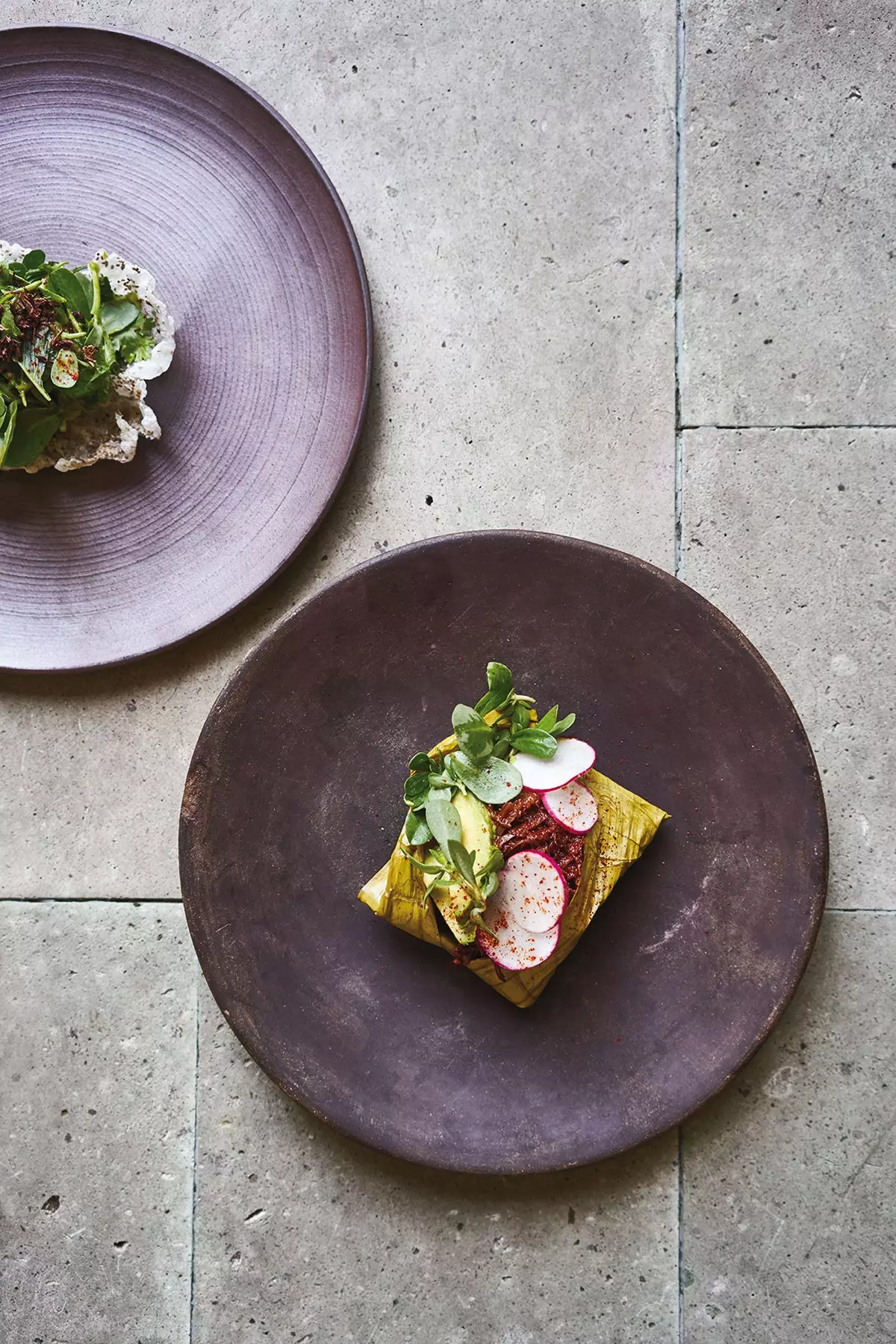
Guacamole with herbs and tamale with barbecued beef, radish and avocado in Creole
Not long ago, craft was a dirty word. “It was craft or design, but they never came together” says Sources. Forcella, who recently arrived in Oaxaca from Chiapas, describes the craft boom in the region as a blessing as well as a curse.
"We live in a privileged moment," adds Fuentes, referring to the growing craft trend that can be seen in the proliferation of embroidery and tassels in collections such as those of Isabel Marant or J.Crew.
“But we have to be aware of the social, not only the aesthetic, as well as the responsibility of working with people who own these traditions. Otherwise, they will disappear at the precise moment this trend ends.”
The irony is very great. Oaxaca – land of the seven moles and the ancient city of Monte Albán , a complex of pyramids, markets and temples built by the Zapotecs, the same ones who devised some of the first forms of writing and 365-day calendars – is fashionable among a group of foreign bohemians and, at the same time, it is one of the poorest states in Mexico and one of the most affected in the earthquake last September.
This is why the group welcomes a cautious optimism to the ephemeral focus of fashion while looking for the success of the movement slow food, responsible for drawing international attention to the yellow mole or the deceptive simplicity of a street food stall of memelas and memelitas with seats ( tortillas spread with lard).
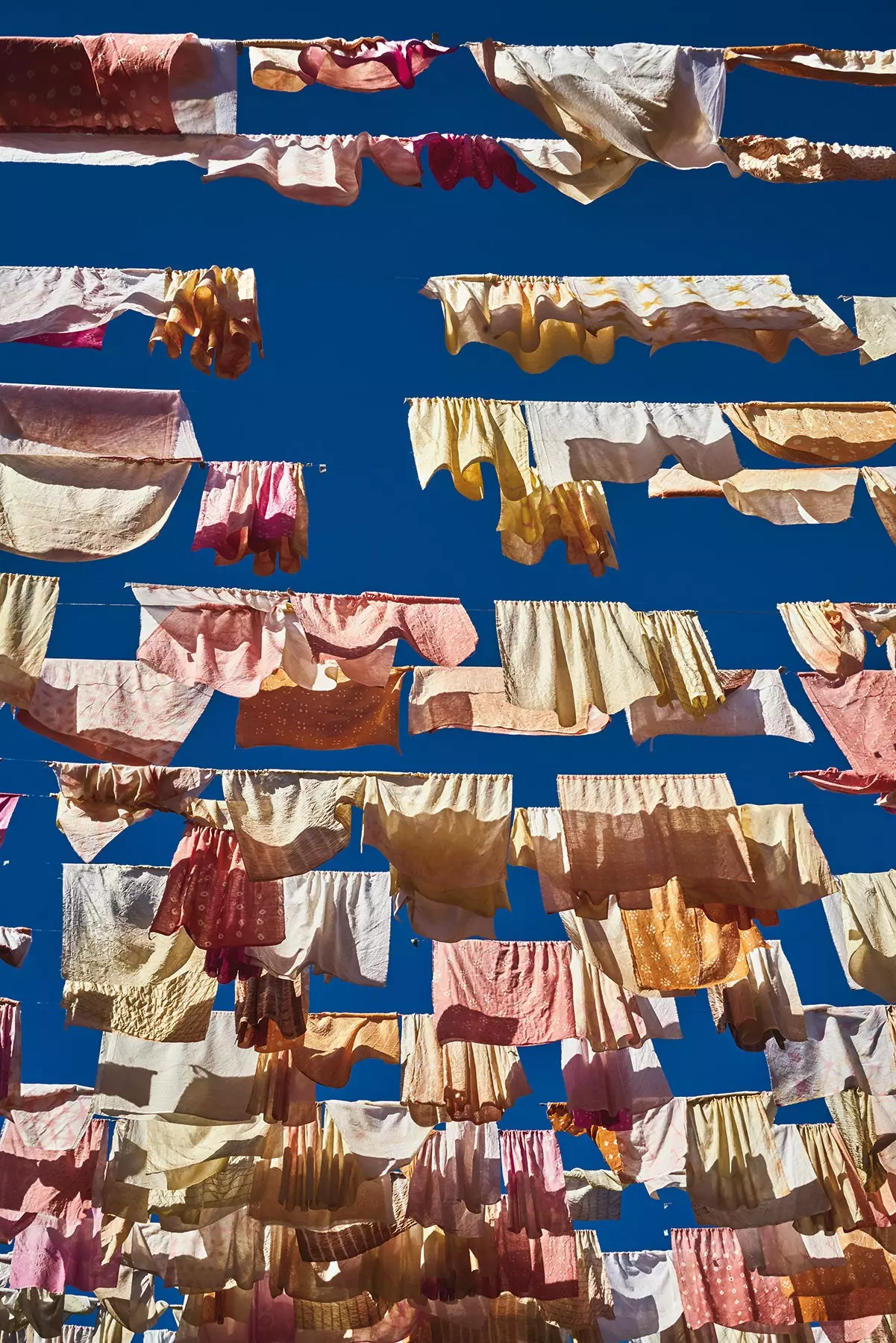
Installation in the Textile Museum of Oaxaca
"If you give empower women artisans and create awareness around their work, their whole family and the communities they belong to will benefit and be able to stay in their own city,” he says. Harp Crosses, whose mission as founding director of Studio Xaquixe is to commit to innovation in glass design.
Everything he produces is sustainable, from the jugs of water made with hand-blown and molded glass to the works of art and architectural installations. "Following this course, a path can be created that makes it possible to stop emigration."
As I looked around Chrastil's house, I noticed that the weaves of the baskets scattered throughout the kitchen, as well as the shapes of the sand colored cups, they had more defined and refined silhouettes compared to those I saw stacked in the market.
Some were collaborations between local artisans and designers like Harp Cruces and López, whose designs appeal to a tribal style. In fact, we were drinking from little glass cups sculpted by hand by Studio Xaquixe, and neither of them was exactly the same as the other.
For these women, whose life mission is to empower artisans while implying the value of these pieces to the international market, the irregularity and uniqueness of each object is both a unique advantage when it comes to finding a market in which they fit... and an Achilles heel.
“When you are producing a collection of wholesale bags for a client, it is very difficult for them to understand the limitations of working with certain materials and dyes”, comments López, who with her two partners created the Lanii line, as well as a business that helps provide materials to international fashion designers.
"In India and Guatemala, the manufacturing mentality is different," says Forcella. "Instead, in Oaxaca it is a woman or a man who produces what comes to be considered a piece of handicraft”. Along with her companions, López often drives six hours to meet with artisans in remote villages, not only to collaborate on design and keep production running, but also to consolidate relationships and therefore trust.
“Every once in a while there might be misunderstandings coming from the translation or someone getting offended and saying, 'I don't have time for this,' but we always try to convince them to work with us again and again” says Sampayo García, who oversees Lanii's payment to artisans.
"Your problems are our problems" Lopez says. When Michelle goes to a town, she always eats at someone else's house! Once we come to fruition with them, they tend to trust us and vice versa.”
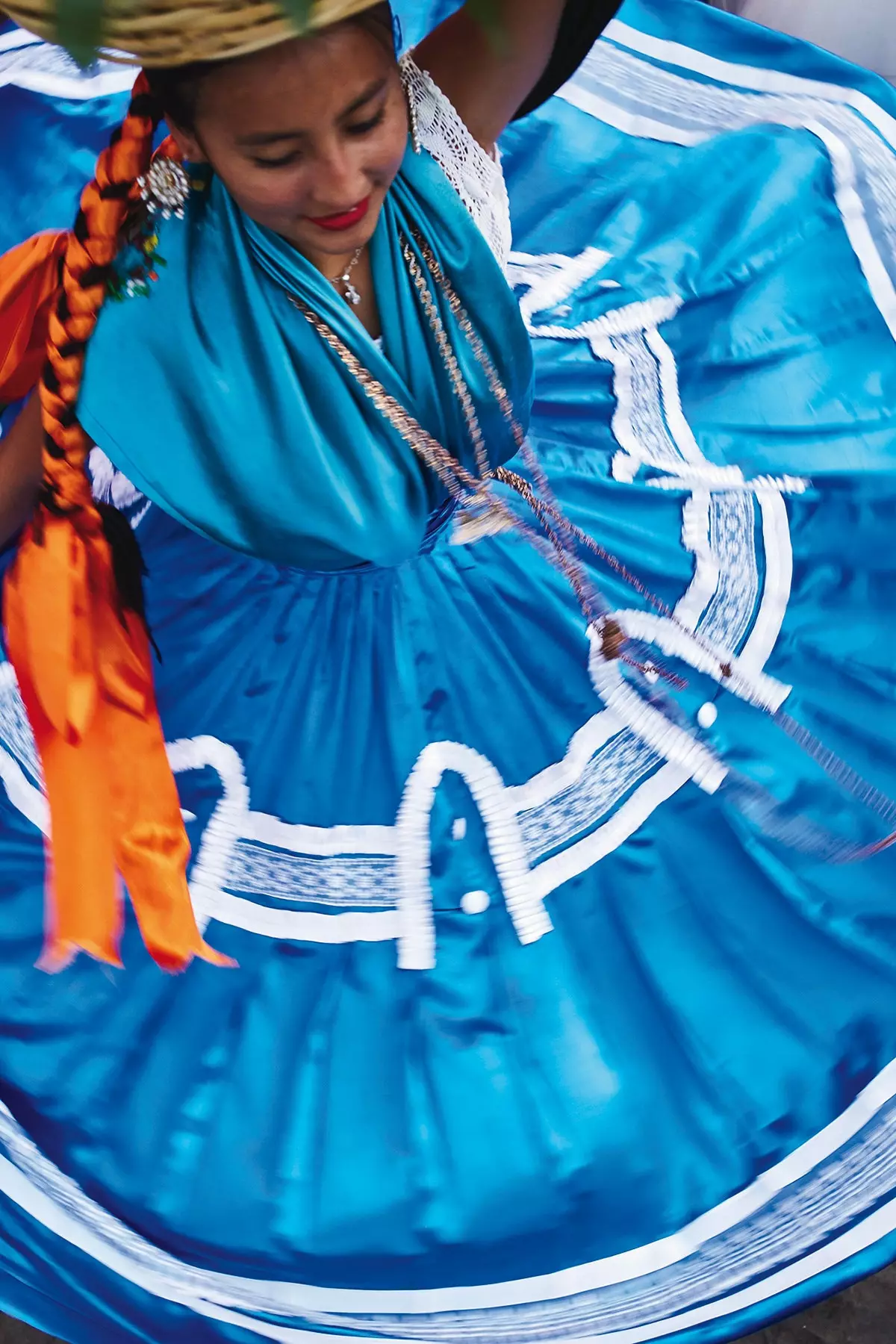
Woman dancing at a local fair
Create a sustainable production model It requires patience and trust, which is hard earned, but it also requires radical cultural change. "Here the women they are not used to valuing their own time and handicrafts, which is a big part of them,” says Chrastil.
"Asking for monetary compensation is usually not an option." Now add to that a deeply ingrained sexist culture. “Artisans are used to paternalism and many times they suffer abuse”, laments Fuentes.
This machismo, however, creates a socioeconomic Shortcut, promoting female solidarity between artisans and businesswomen. Harp Cruces tells us an anecdote that he lived at the beginning of his career, when he asked a family friend who had a high position in the local government for a place in the center of the city to display regional crafts.
“He gave us a very crappy site,” he recalls. "I told: ‘you are belittling the artisans of Oaxaca if you expect customers to see us there”. Needless to say, she never spoke to him again. When you're running a business you also manage customer expectations, and order fulfillment requires a delicate balance between culture and commerce.
Fuentes is sensitive to the familiar dangers of the traditional top-down philanthropic model. “We come with the idea of being horizontal”, he tells her, and understands that this only works if everyone involved recognizes that they are in a joint business, the result of mutual respect and having a common goal. "We are human and working with artisans does not mean 'helping' them. Nor does it mean fair trade. It is about building a solidarity economy.”
On my way back to the hotel I stop at **Casa Istanbul,** a cafeteria by day and mezcalería by night, for a drink. A mix of French, American and Mexican 20-somethings, all with regional costumes, drink mezcal, eat and sway to the rhythm of the music.
The idea of everything this crowd wears, eats and even, where they sit, has been crafted somewhere nearby, leads me to one of those body-comforting revelations about our human connection. One of those that seem to arrive only when one is in a foreign land. Although well, it could also have been the mezcal.
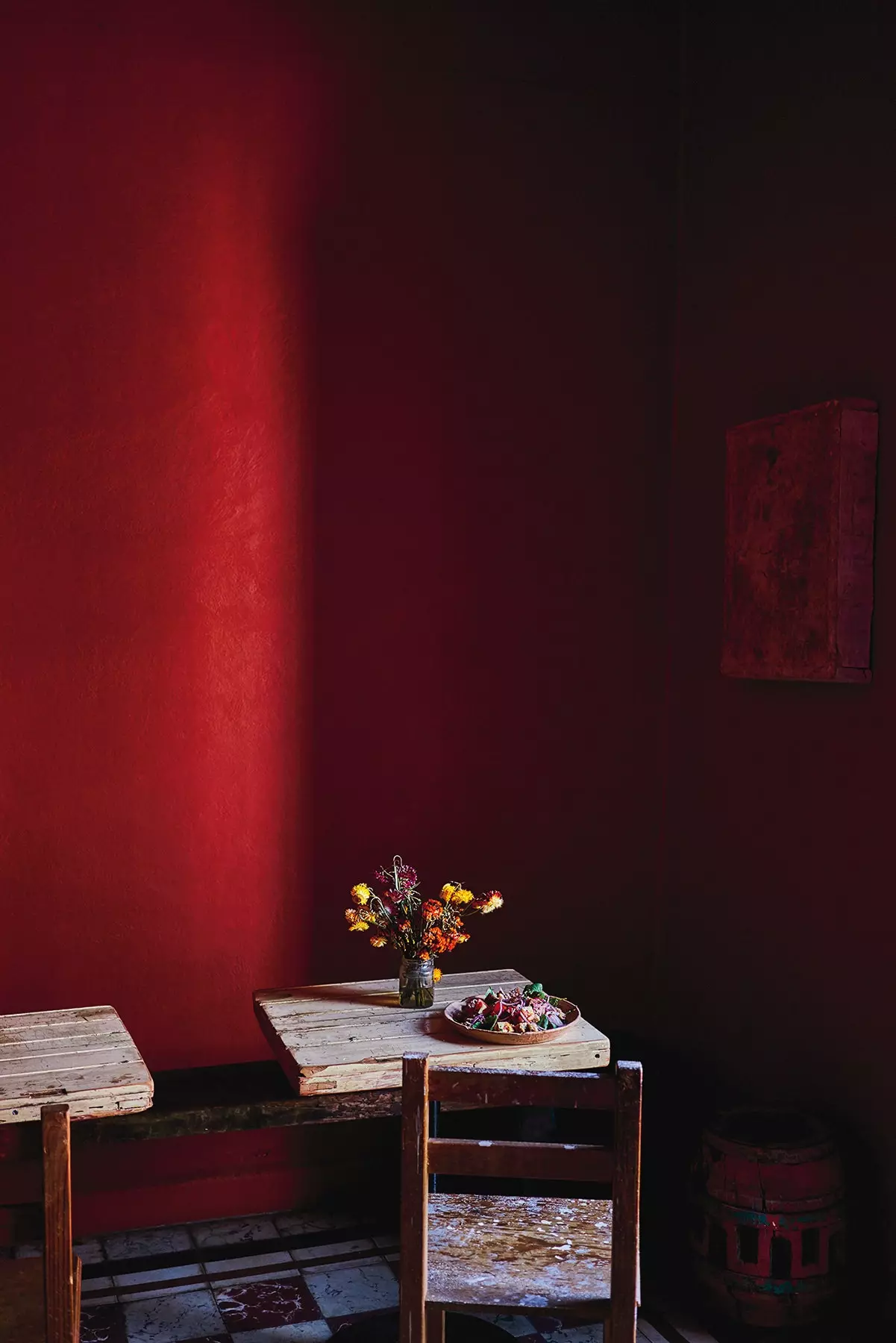
Image of Boulenc Bakery
